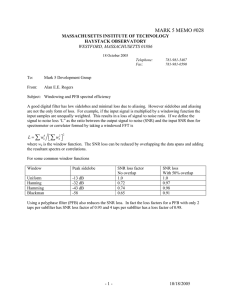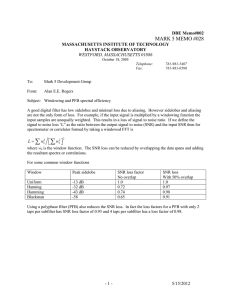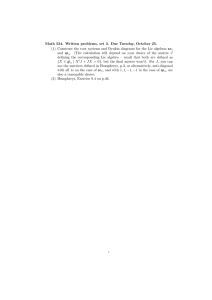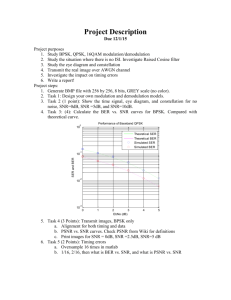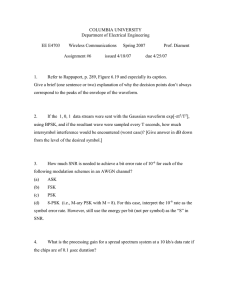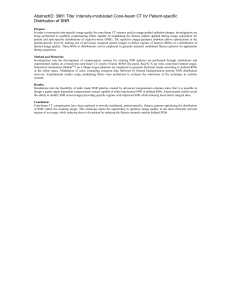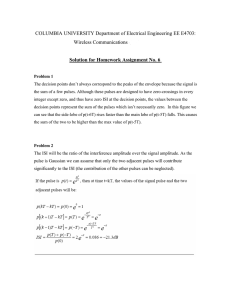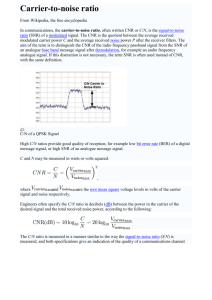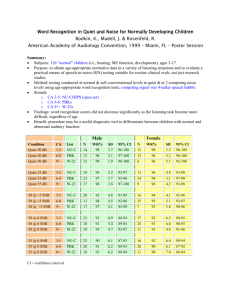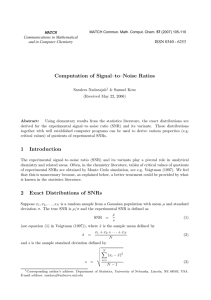Multi-access Poisson Traffic Communication
advertisement
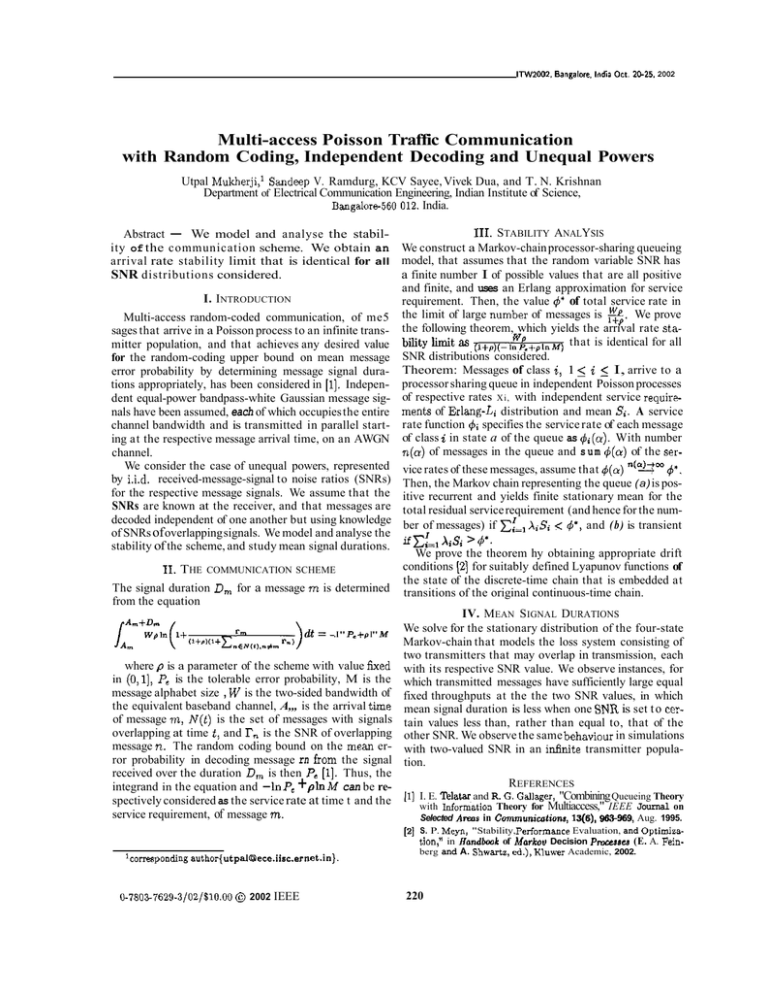
I W 2 0 0 2 . Bangalore, India O c t 2CL25. 2002
Multi-access Poisson Traffic Communication
with Random Coding, Independent Decoding and Unequal Powers
Utpal Mukherji,' Sandeep V. Ramdurg, KCV Sayee, Vivek Dua, and T. N. Krishnan
Department of Electrical Communication Engineering, Indian Institute of Science,
Bangalore-560 012, India.
111. STABILITY ANALYSIS
Abstract - We model and analyse the stability of the communication scheme. We obtain an We construct a Markov-chain processor-sharing queueing
arrival rate stability limit that is identical for all model, that assumes that the random variable SNR has
SNR distributions considered.
a finite number I of possible values that are all positive
and finite, and uses an Erlang approximation for service
I. INTRODUCTION
requirement. Then, the value $' of total service rate in
We prove
Multi-access random-coded communication, of me5 the limit of large number of messages is
the
following
theorem,
which
yields
the
arrival
rate stasages that arrive in a Poisson process to an infinite transW
mitter population, and that achieves any desired value bility limit as ~ ~ + P ) ( - l I n ~ ~ + p Ithat
n M ~is identical for all
for the random-coding upper bound on mean message SNR distributions considered.
error probability by determining message signal dura- Theorem: Messages of class i, 1 5 i 5 I, arrive to a
tions appropriately, has been considered in [l]. Indepen- processor sharing queue in independent Poisson processes
dent equal-power bandpass-white Gaussian message sig- of respective rates Xi, with independent service requirz
nals have been assumed, each of which occupies the entire ments of Erlang-Li distribution and mean Si. A service
channel bandwidth and is transmitted in parallel start- rate function +ispecifies the service rate of each message
ing at the respective message arrival time, on an AWGN of class i in state a of the queue as $,(a). With number
n(a) of messages in the queue and s u m +(a)of the serchannel.
We consider the case of unequal powers, represented vice rates of these messages, assume that +(a)n(a)+m
--t $'.
by i.i.d. received-message-signal to noise ratios (SNRs) Then, the Markov chain representing the queue (a) is posfor the respective message signals. We assume that the itive recurrent and yields finite stationary mean for the
SNRs are known at the receiver, and that messages are total residual service requirement (and hence for the numdecoded independent of one another but using knowledge ber of messages) if Cf=, XiSi < $', and ( b ) is transient
of SNRs of overlapping signals. We model and analyse the
xis, > $'.
stability of the scheme, and study mean signal durations. if
We prove the theorem hy obtaining appropriate drift
conditions (21 for suitably defined Lyapunov functions of
11. THE COMMUNICATION SCHEME
the state of the discrete-time chain that is embedded at
The signal duration D, for a message rn is determined transitions of the original continuous-time chain.
from the equation
IV. MEAN S IGNAL DURATIONS
\
We
solve
for
the stationary distribution of the four-state
.I" P.+P I" M
Markov-chain that models the loss system consisting of
two transmitters that may overlap in transmission, each
where p is a parameter of the scheme with value fixed with its respective SNR value. We observe instances, for
in (0,1],P, is the tolerable error probability, M is the which transmitted messages have sufficiently large equal
message alphabet size , W is the two-sided bandwidth of fixed throughputs at the the two SNR values, in which
the equivalent baseband channel, A,,, is the arrival t i e mean signal duration is less when one SNR is set t o eerof message rn, N ( t ) is the set of messages with signals tain values less than, rather than equal to, that of the
overlapping at time t, and r, is the SNR of overlapping other SNR. We observe the same behaviour in simulations
message n. The random coding bound on the mean er- with two-valued SNR in an infinite transmitter popularor probability in decoding message rn from the signal tion.
received over the duration D, is then P, [l]. Thus, the
REFERENCES
integrand in the equation and - h Pe p In M can be re[l]
I.
E.
Telatm~
and
R.
G
. Gallager, "Combining Queueing Theory
spectively considered as the service rate at time t and the
with Information Theory for Multiaccess," IEEE Journal on
service requirement, of message rn.
Selected A m s in Communication+ 13(6), 96b969, Aug. 1995.
3.
Xi=,
+
[Z] S. P. M e p , "Stability, Performance Evaluation,
and Optimira
Decision PlDcessea (E. A. Feinberg and A. Shwarta, ed.), Kluwer Academic, 2002.
tion," in H a n d h k of Markov
'carresponding author{utpalQece.iiae.ernet.in).
0-7803-7629-3/02/510.00@ 2002 IEEE
220

